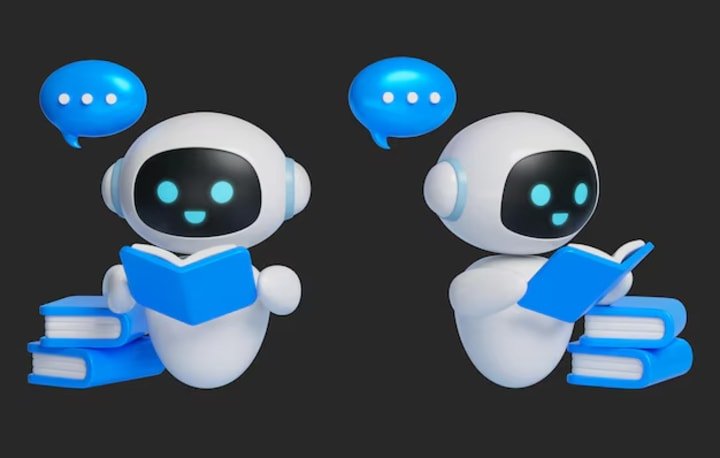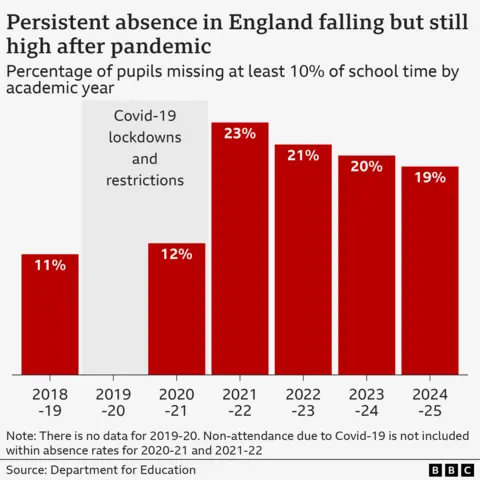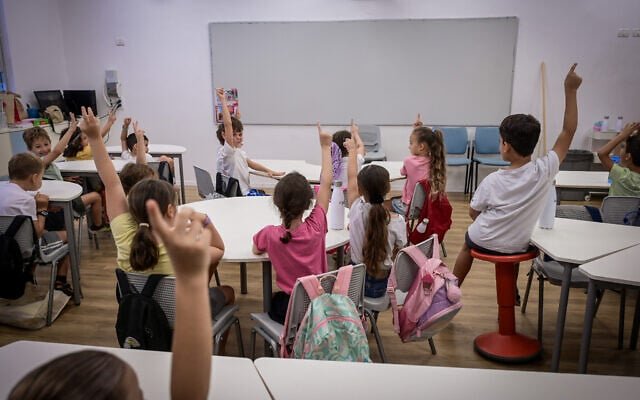Education
Is Using AI Cheating? How to Use It Responsibly for School (By: Streak Ranker)

The advent of Artificial Intelligence (AI) tools has ignited a global discourse within educational institutions, prompting a re-evaluation of academic integrity. The fundamental question—”Is using AI cheating?”—does not have a simple yes or no answer. Instead, it’s a nuanced issue that depends heavily on the context, the specific AI tool, and, most critically, the intent and manner of its use by students. The consensus among educators and experts is that AI is not inherently cheating, but rather becomes so when it is employed to gain an unfair advantage, misrepresent one’s own knowledge, or bypass the essential cognitive processes of learning.
Key Insights into AI and Academic Integrity
AI is not inherently cheating: The ethical use of AI hinges on the how—whether it supports learning or circumvents personal effort and understanding.
Transparency and disclosure are paramount: Students should always be upfront about AI use, citing it properly, and adhering to institutional policies.
AI as a learning enhancer: When used for brainstorming, proofreading, or idea generation, AI can be a powerful tool that augments, rather than replaces, critical thinking and original work.
Understanding Academic Dishonesty in the Age of AI
Academic dishonesty is broadly defined as any action that allows a student to gain an unfair advantage or to misrepresent their true knowledge or effort. When applying this definition to AI, certain uses clearly fall into the realm of cheating, while others serve as legitimate learning aids. The distinction lies in whether the AI is performing the core intellectual work for the student or merely assisting them in their own intellectual endeavor.
The Fine Line: When AI Becomes Cheating
Using AI becomes cheating when it replaces a student’s original thought, research, and writing without proper acknowledgment or when it’s used to generate entire assignments that are then submitted as one’s own work. This includes:
Submitting AI-generated content as original: If a student uses an AI tool to write an essay, a report, or answers to exam questions and presents it as their own, this is considered academic dishonesty. Institutions like Penn Foster and the University of Maryland explicitly state that using AI to generate parts or all of an assignment without citation is cheating.
Bypassing personal effort: Relying on AI to complete assignments without understanding the underlying concepts or contributing personal intellectual effort undermines the entire purpose of education. The goal of schoolwork is to develop critical thinking, problem-solving skills, and knowledge retention, which are all circumvented by such misuse of AI.
Gaining an unfair advantage: If a student uses AI in a high-stakes assessment where others are not, or where its use is explicitly forbidden, it creates an unfair competitive environment.
Despite fears of a massive surge in cheating since the introduction of AI, research indicates that the reasons students cheat are often unrelated to technology access. However, AI’s capabilities can amplify existing dishonest behaviors, making it easier for some students to produce seemingly polished work quickly, thereby intensifying concerns about academic integrity.
Visual representation of student engagement with AI tools in educational settings.
How to Harness AI Responsibly for Academic Success
When used ethically and transparently, AI tools can be invaluable assets that enhance learning, improve productivity, and foster critical thinking. The key is to leverage AI as a sophisticated learning aid, not a substitute for genuine intellectual engagement.
Core Principles for Responsible AI Use
Understand and Adhere to School Policies: Educational institutions are rapidly developing and updating their guidelines on AI usage. It is imperative for students to familiarize themselves with these policies. Many schools now expect explicit disclosure of AI assistance.
Transparency and Citation: Always be transparent about how and when AI tools were used. If AI assisted in brainstorming, outlining, or refining text, acknowledge it. This aligns with academic practices of citing all sources of information and assistance. For example, a citation might state: “Content generated with assistance from AI tool [name], and verified/edited by the author.”
AI as a Learning Aid, Not a Shortcut: AI should support your learning process, not replace it. Use AI for tasks such as:
Brainstorming and Idea Generation: AI can help kickstart the ideation process for essays or projects.
Grammar and Style Checks: Tools like Grammarly or AI-powered editors can help improve writing mechanics and clarity.
Summarizing Complex Texts: AI can condense lengthy articles or research papers, but students must still critically evaluate and verify the summarized content.
Concept Clarification: AI can explain difficult concepts or provide different perspectives, similar to a tutor.
Research Support: AI can help organize research materials or identify key themes.
Critically Evaluate AI Output: AI models can sometimes produce inaccurate, biased, or incomplete information. Always review, verify, and cross-reference AI-generated content with credible sources. This practice not only ensures accuracy but also develops essential critical thinking skills.
Maintain Personal Contribution and Understanding: The final work must reflect your own understanding, voice, and critical thought. Integrate AI outputs with your unique insights and ensure you can articulate and defend the content as your own.
Engage in Ethical Reflection: Beyond policies, understand the moral principles behind academic integrity. Ethical AI use contributes to your intellectual and moral development, fostering a culture of trust and honesty.

AI tools can be effectively integrated into classroom settings to support learning.
The Educator’s Role in Fostering AI Literacy and Integrity
Educators play a crucial role in guiding students toward responsible AI use. This involves:
Demystifying AI: Explaining how AI gathers and processes data helps students understand its capabilities and limitations.
Developing Clear Policies: Institutions must establish unambiguous guidelines regarding acceptable and unacceptable AI use.
Promoting AI Literacy: Equipping students with the knowledge and skills to understand, use, and develop AI systems ethically is paramount. Frameworks like PROMPT (Purpose, Role, Organization, Modeling, Parameters, Tweaking) for AI use and EDIT (Evaluate, Determine, Identify, Transform) for evaluating outputs can be beneficial.
Emphasizing Human Oversight: Reinforcing that human oversight and decision-making remain essential, even when AI is involved, promotes accountability.
Comparative Analysis of AI Use in Academia
To better understand the multifaceted aspects of AI integration in educational settings, let’s look at a comparative analysis of different aspects related to academic integrity and responsible AI use. The following radar chart illustrates key considerations for both students and educators.

This radar chart visually represents the perceived importance of different aspects of AI use from both student and educator perspectives, on a scale of 1 to 5. For example, “Personal Effort” is highly prioritized by educators, while “Critical Evaluation” of AI output is crucial for both groups. This highlights areas of consensus and potential areas for increased focus in AI literacy programs.
Understanding the Impact of AI on Learning Behaviors
The integration of AI into educational practices introduces new dynamics to student learning behaviors. While it offers unprecedented opportunities for enhanced learning, it also presents challenges related to dependence and critical thinking. The bar chart below illustrates hypothetical scores (out of 10) representing the impact of AI on various learning aspects.

The Ethical Compass for AI in Education
Navigating the ethical landscape of AI in education requires a clear understanding of principles that ensure fairness, accountability, and the genuine advancement of learning. The following mindmap visually organizes the key ethical considerations and responsible practices for integrating AI into academic environments.
Conclusion
The integration of AI into educational settings marks a transformative period, presenting both profound opportunities and significant ethical challenges. The question of “Is using AI cheating?” unequivocally depends on the manner and intent behind its application. When AI tools are used to circumvent personal effort, misrepresent one’s own knowledge, or gain an unfair advantage, they cross the line into academic dishonesty. However, when employed transparently as aids for brainstorming, research, writing enhancement, or conceptual clarification, AI can profoundly enrich the learning experience, fostering critical thinking and efficiency.
Ultimately, upholding academic integrity in the AI era requires a collaborative effort from students and educators alike. Students must commit to transparency, critically evaluate AI outputs, and ensure their work genuinely reflects their own intellectual engagement. Educators, in turn, must develop clear policies, cultivate AI literacy, and foster a culture where ethical reflection and genuine learning are prioritized over mere rule enforcement. By embracing AI responsibly, education can evolve to empower students with the tools and skills necessary to thrive in an increasingly AI-integrated world, without compromising the fundamental values of integrity and intellectual growth.
Education
First week ‘critical’ to avoid children missing school later, parents told

Hazel ShearingEducation correspondent
 Getty Images
Getty ImagesPupils in England who missed school during the first week back in September 2024 were more likely to miss large parts during the rest of the year, figures suggest.
More than half (57%) of pupils who were partially absent in week one became “persistently absent” – missing at least 10% of school, according to government data first seen by the BBC.
By contrast, of pupils who fully attended the first week, 14% became persistently absent.
Education Secretary Bridget Phillipson said schools and parents should “double down” to get children in at the start of the 2025 term, which is this week for most English schools.
A head teachers’ union said more support was needed “outside of the school gates” to boost attendance.
Schools have always grappled with attendance issues, but they became much worse after the pandemic in 2020 and schools closed to most pupils during national lockdowns.
Attendance has improved since, but it remains a bigger problem than before Covid.
Overall, about 18% of pupils were persistently absent in the 2024-25 school year, down from a peak of 23% in 2021-22 but higher than the pre-Covid levels of about 11%.
The Department for Education (DfE) said the data from the first week of the 2024-25 school year showed the start of term was “critical” for tackling persistent absence.

Karl Stewart, head teacher at Shaftesbury Junior School in Leicester, said his school’s attendance rates were higher than average and but there was a “definite dip” in the two years after Covid.
“I get why. Some of that wasn’t necessarily parents not wanting to send them in. It was because either they had got Covid or other things, they were saying, ‘We’ll just keep them off now to be sure’,” he said.
The school has incentives like awards and class competitions to keep absence rates down, and Mr Stewart said attendance had more or less returned to pre-Covid levels.
“When we have the children in every day the results are just better,” he said.
“If you’re here, that gives you more time for your teacher to notice you, for us to see all that good behaviour [and] that really hard work – and that’s what we want.”
But, like lots of schools, he said some parents still took their children on unauthorised term-time holidays to make the most of cheaper costs.
Others, he said, have taken children for medical treatments overseas to avoid NHS waiting lists.

The education secretary said that while attendance improved last year, absence levels “remain critically high, putting at risk the life chances of a whole generation of young people”.
“Every day of school missed is a day stolen from a child’s future,” Phillipson said.
“As the new term kicks off, we need schools and parents to double down on the energy, the drive and the relentlessness that’s already boosted the life chances of millions of children, to do the same for millions more.”
The DfE said 800 schools were set to be supported by regional school improvement teams – through attendance and behaviour hubs.
These hubs are made up of 90 exemplary schools which will offer support to improve struggling schools through training sessions, events and open days.
It said it had appointed the first 21 schools that will lead the programme.
However, Pepe Di’Iasio, general secretary of the Association of School and College Leaders, said attendance hubs were not a “silver bullet” and a more “strategic approach” was needed.
“I think the government has worked really hard to improve attendance and it continues to be a priority for them, but there’s certainly more to do,” he told the BBC.
“So many of the challenges that [school leaders] are facing come from beyond the school gates – children suffering with high levels of anxiety, issues around mental health.”
He said school leaders wanted quicker access to support for those pupils and specialist staff in schools, but pupils also needed “great role models” in the community through youth clubs and volunteer groups.
The Conservatives said Labour’s Schools Bill had dismantled a “system that has driven up standards for decades”.
Shadow education secretary Laura Trott said: “Behaviour and attendance are two of the biggest challenges facing schools and it’s about time the government acted.”
She added: “There must be clear consequences for poor behaviour not just to protect the pupils trying to learn, but to recognise when mainstream education isn’t the right setting for those causing disruption.”
Additional reporting by Nathan Standley
Education
AI in the classrooms: How Bangladeshi schools are adapting to a new digital era
The recent explosion of Artificial Intelligence (AI) has pervaded numerous industries, going from a futuristic concept to an everyday reality. However, the impact of AI on schooling has been exceptionally staggering.
From helping students complete assignments to reshaping the way teachers think about homework and exams, AI is beginning to redefine education all over the world.
Bangladesh is no different.
Artificial Intelligence isn’t just coming to Bangladeshi classrooms—it’s already here. While its promise of convenience and quick solutions is quite alluring to students, the ever-growing presence of AI in schools has raised difficult questions: is learning actually taking place anymore or is it being replaced by answers generated not from thought, but from machines?
In schools across Bangladesh, AI tools like ChatGPT have quietly revolutionised how students complete their homework, how teachers prepare lessons, and how institutions rethink education altogether.
Is it a blessing or a bane?
Students have quickly adapted to using advanced AI chatbots like ChatGPT, making AI an unavoidable and integral part of academic life. From essays to homework, students are increasingly finding ways to rely on AI not just to work faster, but to sidestep studying altogether.
Many schools and educators have now been forced to accept that resisting AI is no longer an option. Schools must adapt to the new reality or risk becoming redundant.
Yafa Rahman, Vice Principal and Senior Business Studies Teacher of Adroit International School, told The Business Standard, “Talks about integrating AI in the school curriculum is a global concern, and my school has had meetings with Pearson Education on how to do that in the best possible manner as well as train teachers to use AI in a beneficial way while being able to spot unethical AI use. This is an ongoing discussion, and we will see many changes soon.”
Yafa explained that her school also employs AI tools to structure assignments and class content. Rather than banning AI altogether, she believes in channelling students’ fascination with technology into meaningful learning. “Students rely on technology so much that if we incorporate any technology into the learning process, students instantly become more interested,” she said.
Rethinking the curriculum
The convenience of AI comes with a heavy cost. Teachers are reporting a surge in AI-generated assignments. Entire essays, reports, and even personal reflections are being turned in with no human touch. And it’s getting harder to spot the difference.
Educators have responded by rethinking the very structure of education in the country. Oral assessments, in-class essays, and presentations have become increasingly common, as schools seek to test students’ independent thinking rather than their ability to reproduce AI-generated answers.
“For assignments meant to show knowledge and understanding, I’ve returned to using pencil and paper to prevent AI use. For reflective assignments, I encourage students to use AI but remind them to think critically. You do not always have to agree with what AI generated, and key facts and figures must be checked with reliable sources,” said Olivier Gautheron, a Science Teacher at International School Dhaka (ISD) who has earned the “AI Essentials for Educators” certification from Edtech Teachers in the US.
This hybrid approach reflects a wider consensus among educators that AI should not be ignored but incorporated responsibly, encouraging students to refine their critical faculties alongside their digital literacy.
It’s no longer just about stopping AI from being used. It’s about guiding how it’s used.
AI detection
Detecting AI-generated work isn’t straightforward. In universities, plagiarism software and AI detectors are standard. But in schools, teachers often rely on their personal knowledge of each student’s writing style and capability, using their instincts to identify when a student’s writing does not look like their own.
But Gautheron warns against over-reliance on intuition, preferring restraint over wrongful accusations.
“I believe it all comes down to knowing your students and their abilities,” he said. “There’s a high chance of mistakenly identifying student work as AI-generated when it’s not.”
He recalled an incident when he suspected a student of using AI, only to learn that the child had simply used software to improve grammar without altering the ideas. “This is perfectly acceptable, as the purpose of the assignment was for students to generate their own ideas,” he added.
He believes the solution lies not in advanced software but in dialogue. “Although software exists to detect AI, there are other softwares to make them undetectable. I believe that the best way to detect inappropriate use of AI is asking your students directly. If I feel that a student’s work quality is very different from previous tasks, simply asking them to clarify a few ideas of their work is enough.”
For resource-constrained schools, this approach is also pragmatic, since not every institution can afford detection software.
AI for teachers
Just like students, teachers are also increasingly turning to AI for lesson planning and content creation
Emran Taher, Cambridge examiner and senior English instructor at Mastermind School, sees AI as a game-changer.
“It is not just the students who use AI. Teachers and schools are using it too. I can keep my syllabus up-to-date and incorporate more relevant topics and examples instead of just relying on textbooks. This helps grab students’ interest while reducing issues like bunking classes.”
He also uses AI for personalised instruction. By feeding student data—age, class level, strengths, and weaknesses—into AI tools, he receives tailored recommendations that help him address individual needs. “There are no bad students, only bad teachers,” he said.
Striking the right balance
AI’s presence in schools reveals a tension: the same tool that can personalise learning and spark creativity can also be used to bypass real thinking. This balancing act between embracing innovation and preserving the essence of education appears to be the defining challenge of AI use.
However, there is no turning back. AI is already embedded in how schools operate. What matters now is how educators choose to respond. As Bangladeshi schools navigate this shift, teacher training, investment in digital infrastructure, and the development of ethical guidelines will all be crucial.
Some see AI as a threat to academic honesty. Others see it as a catalyst for overdue change in the old, rigid education system. But everyone realises that the role of teachers must evolve to address the new digital landscape.
Education
Education Ministry slammed for AI image of kids starting 1st grade

The Education Ministry was panned across social media over the weekend for posting an AI image to Facebook on Friday of a fictional sextuplets ostensibly starting first grade, ahead of the start of the school year on September 1.
The ministry posted a picture of the six children standing in front of a school with the caption: “Next week we go back to school! In the meantime, meet the only sextuplets in the country who are entering first grade: Oren, Omer, Uri, Nadav, Dvir and Gil Orenstein.”
The post then quoted their fictional mother, Ilanit, as saying: “I invested a lot in raising the children; it’s a great miracle that they were all born healthy. I took a two-year break from work to focus on raising the children and my husband was the sole breadwinner. I am the most excited in the world to see them grow up.”
No such sextuplets exist, and the photo was AI-generated. This fact was not initially made clear by the ministry. The post quickly drew a backlash on social media, with thousands of users slamming the ministry that is supposed to educate children for spreading a lie.
“One of your more embarrassing posts. The education system is collapsing, there are no teachers, no values, and schools are barely managing, and this is what you decide to post? A chauvinistic AI story about imaginary sextuplets with a mom who stays home and a father who supports them,” one person responded on Facebook, garnering 1,700 likes.
“Focus on improving education and not on degrading the conversation online,” she added.
Education Minister Yoav Kisch attends a meeting of the Knesset Education, Culture, and Sports Committee in Jerusalem, May 12, 2025. (Yonatan Sindel/Flash90)
Another commenter said the post was “absurd,” and “typical of the lazy and spineless” Education Minister Yoav Kisch, saying that “these are his values and what he promotes before the start of the school year.”
One commenter said that they asked ChatGPT what it thought of the post, saying that the AI chatbot said it was “highly problematic, especially coming from the Education Ministry.”
“The post undermines public trust [in the ministry], and trust is the foundation of the education system,” ChatGPT added, according to the commenter.
“This is the page that represents the places to which you send your children,” said another poster. “Time to consider homeschooling.”
The ministry later defended the upload, responding in a comment to its original post: “Okay, we admit these sextuplets are not really on the way to first grade, the photo was created with AI.
“We wanted to open the school year with a smile and to remind you that just like in school, on the web we also need to stop, check, and use our critical thinking,” it asserted.
“Wishing everyone a curious, fun school year full of good surprises,” its second post said.

Illustrative photo of students on the first day of school, at the Gabrieli Carmel School in Tel Aviv, on September 1, 2024. (Avshalom Sassoni/Flash90)
The Education Ministry under Kisch has undergone a tumultuous year, which included several teacher strikes, budget issues and a controversial change to public school curriculum, which mandated an hour of bible study each week for all students in first to twelfth grade, as well as additional mandatory classes on Zionism and “Israel’s wars and rebirth.”
Schools will also be required to bring students on tours of Jerusalem and Jewish heritage sites around the country, with an emphasis on sites in the West Bank.
-
Tools & Platforms3 weeks ago
Building Trust in Military AI Starts with Opening the Black Box – War on the Rocks
-

 Ethics & Policy1 month ago
Ethics & Policy1 month agoSDAIA Supports Saudi Arabia’s Leadership in Shaping Global AI Ethics, Policy, and Research – وكالة الأنباء السعودية
-

 Events & Conferences3 months ago
Events & Conferences3 months agoJourney to 1000 models: Scaling Instagram’s recommendation system
-

 Jobs & Careers2 months ago
Jobs & Careers2 months agoMumbai-based Perplexity Alternative Has 60k+ Users Without Funding
-

 Business2 days ago
Business2 days agoThe Guardian view on Trump and the Fed: independence is no substitute for accountability | Editorial
-

 Funding & Business2 months ago
Funding & Business2 months agoKayak and Expedia race to build AI travel agents that turn social posts into itineraries
-

 Education2 months ago
Education2 months agoVEX Robotics launches AI-powered classroom robotics system
-

 Podcasts & Talks2 months ago
Podcasts & Talks2 months agoHappy 4th of July! 🎆 Made with Veo 3 in Gemini
-

 Podcasts & Talks2 months ago
Podcasts & Talks2 months agoOpenAI 🤝 @teamganassi
-

 Jobs & Careers2 months ago
Jobs & Careers2 months agoAstrophel Aerospace Raises ₹6.84 Crore to Build Reusable Launch Vehicle





















